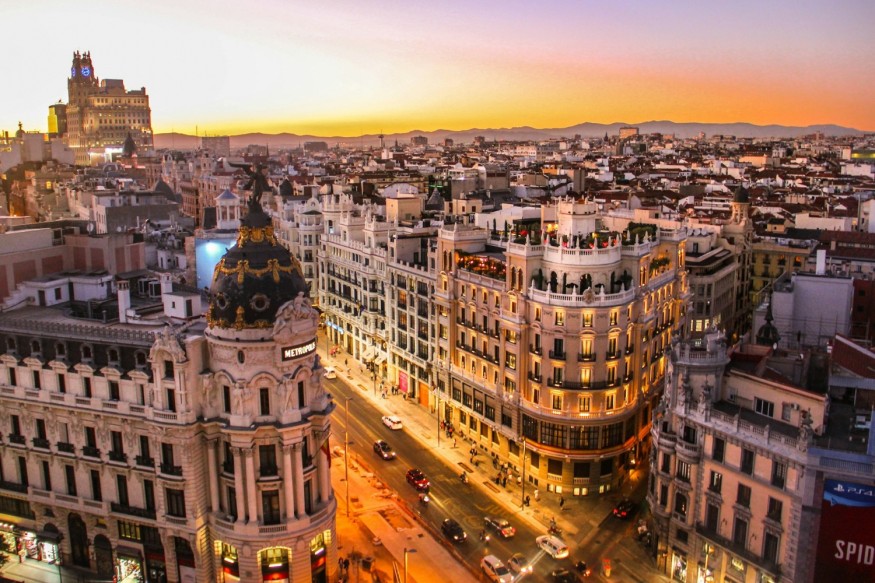
You're thinking about traveling to Madrid? This city, the vibrant capital of Spain, seamlessly blends history, culture, and modernity. Whether you're a first-time visitor or a seasoned traveler, understanding the logistics of traveling to and within Madrid can enhance your experience. Here are some essential tips for navigating this bustling metropolis, covering everything from language barriers to public transport and car rentals.
Traveling to Madrid
1. Madrid-Barajas Adolfo Suárez Airport (MAD): Madrid's main airport, Adolfo Suárez Madrid-Barajas Airport, is one of the busiest in Europe. It is well-connected with major cities worldwide, so you can easily get flights from Miami to Madrid or from other American cities. The airport has four terminals, with Terminal 4 being the newest and largest. Free shuttle buses operate between terminals, ensuring easy transfers.
2. Getting from the Airport to the City:
- Metro: The Madrid Metro Line 8 connects the airport to the city center. The metro is a convenient and affordable option, taking around 30 minutes to reach central Madrid.
- Cercanías Train: Renfe's C-1 line runs from Terminal 4 to various city locations, including Atocha and Chamartín train stations. This is a fast and efficient way to reach downtown.
- Taxi: Taxis are readily available outside the terminals. A flat rate of around €30 applies for trips between the airport and the city center.
- Airport Shuttle: Various private shuttle services offer direct transportation to hotels and other locations in Madrid.
Navigating Public Transport in Madrid
1. Metro: Madrid boasts one of the most extensive metro networks in the world, with 13 lines covering the city and its suburbs. The metro is fast, reliable, and reasonably priced. Tickets can be purchased at machines in stations, and a rechargeable Multi Card is useful for frequent travelers.
2. Buses: EMT Madrid operates an extensive network of buses that cover the entire city. Buses are a great option for areas not serviced by the metro. Night buses, known as "Búhos," operate after the metro closes.
3. Trains: The Cercanías commuter trains are perfect for traveling to the suburbs or nearby towns. Major stations like Atocha and Chamartín connect to regional and high-speed AVE trains.
4. Tips for Using Public Transport:
- Plan Ahead: Use apps like Madrid Metro or Moovit for real-time updates and route planning.
- Off-Peak Travel: If possible, avoid traveling during rush hours (8–10 AM and 6–8 PM) to escape the crowds.
- Safety: Madrid's public transport is generally safe, but keep an eye on your belongings to avoid pickpocketing.
Language Considerations
1. Is It Necessary to Speak Spanish? While speaking Spanish can enhance your experience in Madrid, it's not strictly necessary. Many people in tourist areas, hotels, and restaurants speak English. However, learning a few basic phrases in Spanish can be helpful and appreciated by locals.
2. Useful Spanish Phrases:
- "Hola" (Hello)
- "Por favor" (Please)
- "Gracias" (Thank you)
- "¿Dónde está...?" (Where is...?)
- "¿Cuánto cuesta?" (How much does it cost?)
Renting a Car in Madrid
1. Is It Necessary to Rent a Car? Renting a car in Madrid is not essential due to the city's excellent public transport system. However, if you plan to explore the surrounding countryside or take day trips to nearby cities like Toledo, Segovia, or Ávila, renting a car can be advantageous.
2. Tips for Renting a Car:
- Booking: Book your car in advance to get the best rates. Major rental companies like Avis, Hertz, and Europcar operate in Madrid.
- Driving: Familiarize yourself with Spanish driving laws and road signs. Driving in the city center can be challenging due to narrow streets and heavy traffic.
- Parking: Parking in Madrid can be a bit difficult and expensive. Look for hotels with parking facilities or use public parking garages.
Additional Tips for Enjoying Madrid
- Walking and Cycling: Madrid is a walkable city with many pedestrian-friendly areas. Consider renting a bike or using the BiciMAD bike-sharing service for a different perspective of the city.
- Cultural Etiquette: Spaniards are generally friendly and hospitable. Greetings are important; a simple "hola" or "buenos días" can go a long way. Dinner is usually late, starting around 9 PM, and it's customary to tip 5–10% in restaurants.
- Local Cuisine: Don't miss out on Madrid's culinary delights. Try traditional dishes like cocido madrileño, churros with chocolate, and tapas. Markets like Mercado de San Miguel offer a great way to sample local foods.
- Tourist Information: Tourist information centers, located throughout the city, provide maps, brochures, and helpful advice. These can be particularly useful for first-time visitors.
Madrid is a dynamic city that offers something for everyone. By understanding how to navigate the city, appreciating the cultural nuances, and taking advantage of the excellent public transport system, you can ensure a memorable and stress-free visit. Whether you're there for the history, the food, or the vibrant nightlife, Madrid promises an unforgettable experience.
© 2025 NatureWorldNews.com All rights reserved. Do not reproduce without permission.





